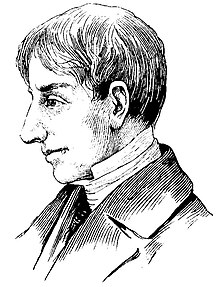Rawlins Lowndes
| Rawlins Lowndes | |
|---|---|
 |
|
| 32nd Governor of South Carolina | |
|
In office March 6, 1778 – January 9, 1779 (as President of South Carolina) |
|
| Lieutenant | James Parsons |
| Preceded by | John Rutledge |
| Succeeded by | John Rutledge (as Governor) |
| 4th Intendant of Charleston, South Carolina | |
|
In office September 1788 – September 1789 |
|
| Preceded by | John Faucheraud Grimké |
| Succeeded by | Thomas Jones |
| Member of the South Carolina House of Representatives from St. Phillip and St. Michael Parishes | |
|
In office 1787–1790 |
|
| Personal details | |
| Born | January 6, 1721 St. Kitts, British West Indies |
| Died | August 24, 1800 (aged 79) Charleston, South Carolina |
Rawlins Lowndes (January 6, 1721 – August 24, 1800) was an American lawyer and politician, and president/governor of South Carolina. His sons, Thomas and William Lowndes, both served in the U.S. Congress.
Lowndes was born on the island of St. Kitts in the British West Indies in January 1721.
At the young age of 21, Lowndes was appointed as the Provost-Marshal of South Carolina. He served in this role for ten years, from 1742 to 1752. Lowndes was first elected to the Royal Assembly, the colonial legislature, in 1749. During his years as a South Carolina political leader, Lowndes was a guiding force in South Carolina’s revolutionary government. He was a member of the First and Second Provincial Congresses, the First and Second General Assemblies, and the First and Second Councils of Safety. In 1776, Lowndes was one of eleven committee members charged with the responsibility of writing a draft constitution for South Carolina.
Despite his involvement in challenging increasingly harsh British measures leading up to the American Revolution, Lowndes opposed armed rebellion and independence from Britain.
On March 7, 1778 South Carolina General Assembly elected Lowndes President of South Carolina after John Rutledge. Lowndes approved major changes to the state constitution on March 19, 1778. The first changed the title of South Carolina’s chief executive office from president to governor. The three major changes removed the governor’s power to veto legislation, created a Senate elected via popular election, and disestablished the Church of England in South Carolina.
...
Wikipedia
